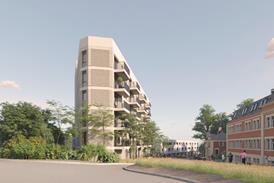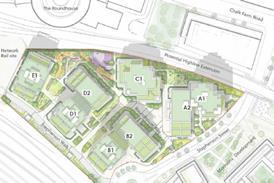Everyone wants good design but they’re not prepared to let architects get on with their job, says Mark Middleton

Design is caught in a vice. Architects are subject to higher and higher expectations from the press and commentators on design quality, and alongside this are reassurances from the Department for International Trade that design skills are marketable and an important arrow in our global identity quiver for the post-Brexit world.
Yet simultaneously whenever there is a cost overrun, especially on major projects, it is put down to poor design. As an example, following the recent £500m bail-out of the Elizabeth line the media had a field day blaming “design changes” for the overrun. Another example is the report into the nuclear industry which said the spiralling costs which were delaying the delivery of projects could be attributed to incomplete designs. Seemingly design quality is an acknowledged differentiator for the profession, yet no one gets the time or space to design, and it’s a frequent scapegoat for clients.
Architects cannot be blamed for these situations. The delays and overruns are about the programme, project managers and clients whose attitudes toward design are contradictory. They demand a high standard of integrated design yet some are unwilling to allow the time for any of it to happen and regularly change elements of the design team between stages, eroding accountability and extending programmes while saving pennies on design fees. This is not to say that design development is a sequential set of gateways with projects only able to move to the next one at the full completion of the previous stage. But having the same architect take projects through the various stages ensures accountability, continuity and guardianship of the design.
On the recently opened London Bridge station the client decided to start demolitions based on some very basic enabling works information due to delays caused by an extended planning process. All the detailed design, coordination and tendering were done as the building was being built. In this case and after the obligatory and somewhat unnecessary re-tendering process between stages 3 and 4, the design team was assembled in a temporary office next to the site. Clients, project managers, architects and engineers were all seated together to complete the design and deliver it on site to a prescribed programme. Despite the circumstances, professionals joined together behind the project and it was delivered and opened on time. This is a great example of the value of continuity but also of giving space to design while not tendering before the technical solution is ready. Architects have a place, and we can do the job if we are given the space to operate within it. Clients and project managers should look at successful projects more closely and see that keeping a design team together and allowing it enough time to complete designs reaps benefits.
It is my belief that architects are under siege. Our involvement in every one of the RIBA works stages is being threatened, and with it the value of continuity within the design of projects. Unless we do something about it the value and validity of the profession will be consigned to a historical curio.
Clients are now beginning to expect stage 1 brief preparation and stage 2 concept design for free or at least for a vastly reduced rate. Conceptual thinking seems to have little currency any more, either for clients or architects as we give our intellectual capital away for almost nothing. Stage 3 developed design is more or less left alone, although if you have been paid for stages 1 and 2 you are likely to have to re-tender in order to be appointed for the later stages.
Clients are also increasing their requests for BIM deliverables even though most have no idea what they’re asking for or why. A relatively complete model at stage 3 is being taken by clients to mean that everything is coordinated and there are few problems with the building. It is an inaccurate view to take. Despite this, BIM models give clients the permission to send information to sub-contractors at this stage which cuts architects out entirely or severely limits our influence.
What all this adds up to in a world where fees haven’t recovered fully since 2007 is that architects are struggling within the constraints enforced by having to operate in few stages while design quality is still high on the agenda. When we have the freedom to do our jobs properly, projects succeed. Now more than ever this is the moment when we should be pushing back on all fronts to champion design quality and therefore protect our role and input for all RIBA work stages.
















2 Readers' comments